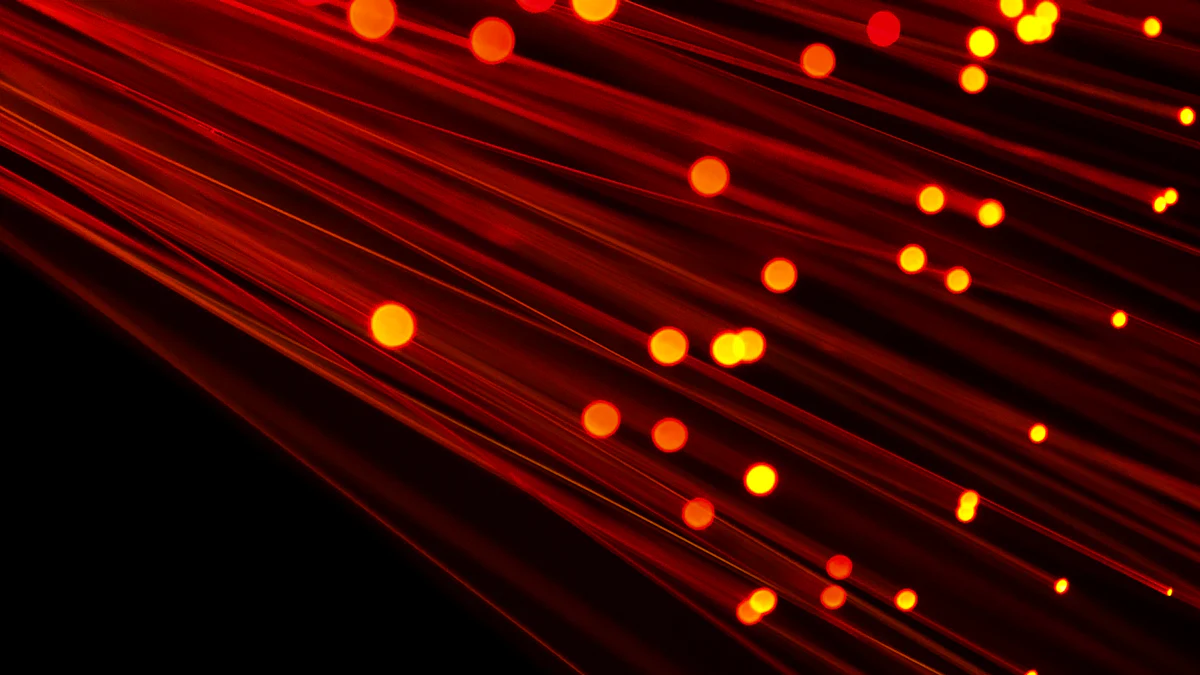Unraveling Optical Fiber: The Backbone of Modern Communication
Optical fiber revolutionized modern communication, serving as the backbone for high-speed data transmission. Its significance lies in its ability to transmit information over long distances with minimal interference. Throughout this blog, readers will delve into the basics of optical fiber, explore its applications in various industries, and gain insight into the future advancements shaping this technology.
The Basics of Optical Fiber

Definition and Structure
Optical fiber, a slender, flexible strand composed of glass or plastic, facilitates the transmission of data through light signals. The core, a thin glass center, surrounded by a cladding layer, ensures total internal reflection. This design prevents signal loss and enables efficient data transmission over long distances.
Types of Optical Fiber
There are two primary types of optical fiber: multimode and single-mode. Multimode fibers have a larger core diameter, allowing multiple modes of light to propagate. Conversely, single-mode fibers feature a smaller core size, enabling a single mode of light to travel along the fiber. Each type serves distinct purposes based on the required application.
How Optical Fiber Works
Principle of Total Internal Reflection
The principle of total internal reflection governs how optical fiber functions. When light enters the core-cladding interface at an angle greater than the critical angle, it reflects back into the core instead of refracting outwards. This phenomenon ensures that the light signals remain confined within the core as they travel through the fiber.
Signal Transmission
As light travels through the optical fiber, it undergoes continuous reflections off the core-cladding interface due to total internal reflection. This process enables data transmission in the form of light pulses. The signals can travel vast distances without significant attenuation or interference, making optical fiber an ideal medium for high-speed communication networks.
Applications and Benefits

Uses in Communication
In the realm of communication, optical fiber stands as a cornerstone technology enabling seamless data transmission. Its unparalleled efficiency and reliability have made it indispensable in various sectors, including telecommunications, internet services, and network infrastructure.
Internet and Data Transmission
The utilization of optical fiber for internet and data transmission has revolutionized the digital landscape. With its high-speed capabilities, vast amounts of information can travel across extensive distances without signal degradation. This advancement is crucial for ensuring swift connectivity and uninterrupted access to online resources.
Telecommunication Networks
Telecommunication networks heavily rely on optical fiber to facilitate clear and secure communication channels. By harnessing the power of light signals, these networks can transmit voice, video, and data with exceptional clarity and speed. The integration of optical fiber ensures that messages are delivered promptly and reliably, meeting the demands of modern communication infrastructures.
Advantages of Optical Fiber
The adoption of optical fiber offers a myriad of advantages that elevate communication systems to new heights of performance and dependability.
High Speed and Low Latency
One of the most significant benefits of optical fiber is its ability to transmit data at incredibly high speeds while maintaining minimal latency. This feature is paramount for applications requiring real-time interaction, such as video conferencing, online gaming, and financial transactions. The swift transfer of information through optical fiber guarantees efficient operations across various platforms.
Stability and Security
The inherent stability and security provided by optical fiber make it a preferred choice for critical communication networks. Unlike traditional copper cables susceptible to electromagnetic interference, optical fiber remains immune to such disruptions. Additionally, the secure transmission of data through light signals minimizes the risk of cyber threats or unauthorized access. Organizations can trust in the robustness of optical fiber for safeguarding sensitive information and maintaining operational continuity.
Future of Optical Fiber
Technological Advancements
Innovations in Fiber Technology
Tratos' fiber optic cables have set a new standard in the industry, offering fire-resistant properties and high performance capabilities. These specialized cables incorporate unique compounds that enhance their durability and reliability, making them ideal for demanding environments such as high-speed trains and cutting-edge telecommunications systems.
The continuous research and development efforts in fiber technology have led to remarkable breakthroughs. Companies like Tratos are at the forefront of innovation, pushing the boundaries of what optical fiber can achieve. By integrating advanced materials and engineering techniques, these next-generation cables ensure seamless data transmission even in challenging conditions.
Market Growth and Trends
The market for fiber optic solutions is experiencing unprecedented growth, driven by the increasing demand for high-speed connectivity across various sectors. As industries embrace digital transformation, the need for robust communication infrastructure powered by optical fiber becomes paramount.
Tratos' commitment to delivering superior fiber optic products aligns with the evolving trends in the market. Their focus on quality, performance, and safety resonates with industries seeking reliable solutions for their communication networks. With a strong emphasis on innovation and customer satisfaction, Tratos continues to shape the future of optical fiber technology.
Future Applications
Integration in Smart Cities
The integration of optical fiber networks is pivotal for the development of smart cities. By establishing a robust communication framework based on fiber optics, cities can enhance efficiency, sustainability, and connectivity across various services. From smart traffic management to real-time data analytics, optical fiber forms the backbone of modern urban infrastructure.
Tratos' expertise in providing tailored fiber optic solutions positions them as a key player in shaping smart city initiatives. Their innovative cables enable seamless data transfer essential for powering smart grids, intelligent transportation systems, and IoT applications within urban environments.
Enhanced Global Connectivity
Optical fiber plays a crucial role in fostering enhanced global connectivity by bridging geographical barriers and facilitating seamless communication worldwide. As countries strive to expand their digital footprint and establish reliable networks, optical fiber emerges as a fundamental enabler of cross-border data exchange.
Leveraging Tratos' state-of-the-art fiber optic technologies can unlock new possibilities for global connectivity initiatives. Whether connecting remote regions or supporting international telecommunication networks, these advanced solutions pave the way for a more interconnected world poised for future growth.
Optical fiber stands as the cornerstone of modern communication, enabling high-speed data transmission with unparalleled efficiency. Its significance lies in providing stable and secure connectivity across vast distances. In summary, the blog explored the basics of optical fiber, its diverse applications, and future technological advancements shaping the industry. Looking ahead, the continuous innovations in fiber technology promise exciting developments that will further enhance global connectivity and communication networks.
See Also
Expertise in Fiber Optic Communication: Nylon Cable Usage Guide for FTTR
Current Developments in 24 Cores Fiber Optic Patch Cable Usage in Telecom
Four Strong Advantages of Optical Cable in FTTR for Visible Room Fiber Setup
OM4 Fiber 250um LSZH Indoor Fiber Optic Cable: Vital for Data Centers


